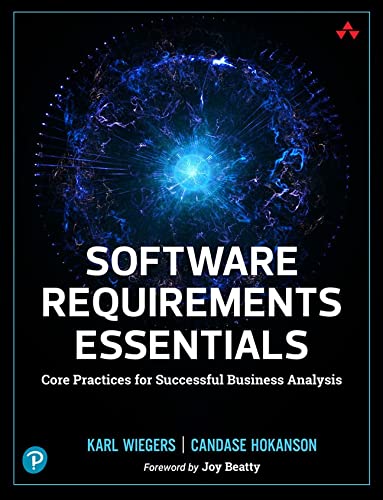

Most ebook files are in PDF format, so you can easily read them using various software such as Foxit Reader or directly on the Google Chrome browser.
Some ebook files are released by publishers in other formats such as .awz, .mobi, .epub, .fb2, etc. You may need to install specific software to read these formats on mobile/PC, such as Calibre.
Please read the tutorial at this link: https://ebookbell.com/faq
We offer FREE conversion to the popular formats you request; however, this may take some time. Therefore, right after payment, please email us, and we will try to provide the service as quickly as possible.
For some exceptional file formats or broken links (if any), please refrain from opening any disputes. Instead, email us first, and we will try to assist within a maximum of 6 hours.
EbookBell Team

4.1
20 reviews20 Best Practices for Developing and Managing Requirements on Any Project
Software Requirements Essentials presents 20 core practices for successful requirements planning, elicitation, analysis, specification, validation, and management. Leading requirements experts Karl Wiegers and Candase Hokanson focus on the practices most likely to deliver superior value for both traditional and agile projects, in any application domain. These core practices help teams understand business problems, engage the right participants, articulate better solutions, improve communication, implement the most valuable functionality in the right sequence, and adapt to change and growth.
Concise and tightly focused, this book offers just enough pragmatic "how-to" detail for you to apply the core practices with confidence, whether you're a business analyst, requirements engineer, product manager, product owner, or developer. Using it, your entire team can build a shared understanding of key concepts, terminology, techniques, and rationales--and work together more effectively on every project.
Learn how to:
Clarify problems, define business objectives, and set solution boundaries
Identify stakeholders and decision makers
Explore user tasks, events, and responses
Assess data concepts and relationships
Elicit and evaluate quality attributes
Analyze requirements and requirement sets, create models and prototypes, and set priorities
Specify requirements in a consistent, structured, and well-documented fashion
Review, test, and manage change to requirements
"I once read the ten best-selling requirements engineering books of the prior ten years. This one book succinctly presents more useful information than those ten books combined."
--Mike Cohn, author of User Stories Applied and co-founder, Scrum Alliance
"Diamonds come about when a huge amount of carbon atoms are compressed. Karl and Candase have done something very similar: they have compressed their vast requirements knowledge into 20 gems